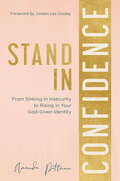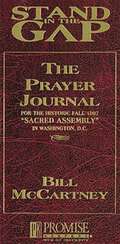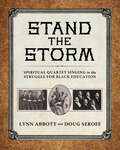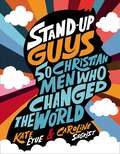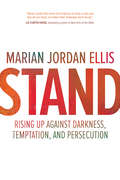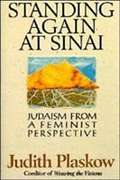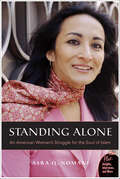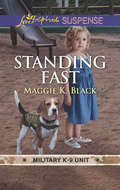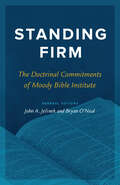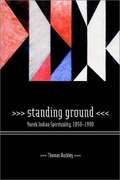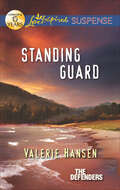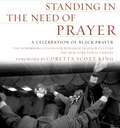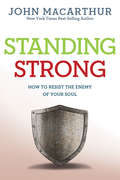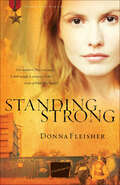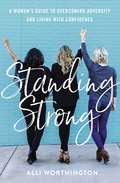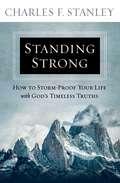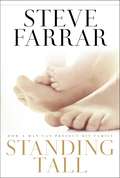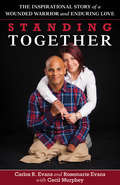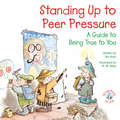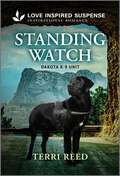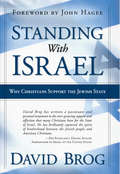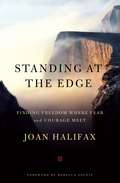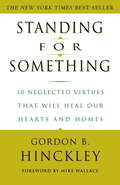- Table View
- List View
Stand in Confidence: From Sinking in Insecurity to Rising in Your God-Given Identity
by Amanda PittmanEsther Press Presents Stand in Confidence by Amanda Pittman Culture, church, and life have sold us narratives about who we&’re supposed to be as women. If we play the part well, we gain love, acceptance, validation, and significance. When we don&’t know which role to play from one day to the next, we sink in insecurity. We feel driven to people-please, downplay, settle, and perform. In all this, we accept less than the abundant life Jesus died to give us. Amanda Pittman, founder of Confident Woman Co., explains how we can rewrite their damaging self-beliefs with the truth about our God-given identity by establishing the Four Components of Confidence: Clarity—Embrace our identity and define our designConnection—Connect with God and connect with othersCompetency—Develop our ability and expand our capacityConviction—Know our responsibility and use our authority With a new perspective and focus, we will stand confidently upon the finished work of Jesus and live boldly in our God-given callings.
Stand in the Gap Prayer Journal
by Bill MccartneyI once knew a football coach. He was a driven man who had sacrificed much to climb the ladder of his profession. This coach loved his job; he was energized by competition, inspired by success. His focus was hard and narrow. He traveled far and wide to charm a prized recruit, spent most waking hours assessing his team, evaluating last week's mistakes, sweating over next week's game plan. His mind was trained to detect the smallest chink in the enemy's armor, to exploit any advantage. Most days he was up and out of the house before anybody else was awake. Many nights he came home long after everyone had gone to bed. He was not, however, a one-dimensional man. He was also a devoted Christian, unashamed of the gospel, energized and outspoken about God. He was quick to proclaim the name of Jesus Christ wherever he went. He attended church and, by all appearances, seemed like the real deal, a sincere believer, on fire for Jesus Christ--a humble servant of God. If someone would have followed this coach from dawn to midnight, he would have seen him praying over his office quarters every morning, and heard him, on his lunch-time walk, ask God's blessing over each staff member and player. He would have beheld a man who talked a lot about God. But in reality, he would have discerned a man intoxicated with coaching, left with no choice but to conclude: "Coach says he's excited about God, but his actions tell me he's really excited about football. He says he's excited about his marriage, but he didn't even see his wife today. I think he's really excited about football." And finally, "Coaching takes so much of this man's time and energy. Coaching--not God--comes first in his life." And he would have been right. By now you've guessed, the coach is me-- or was me. While I wanted balance in my life, there was imbalance. I meant well--I would share the gospel with anyone. I would boldly preach Christ in public, share my love for God. And there is no doubt, in the off-season God got substantially more of my time. But there was a contradiction in my daily walk with God. My heart, while it longed for deeper connection to God, was sold out to my profession, to competition, to whatever it took to win football games. I knew about winning football; I needed to know more about loving "the Lord your God with all of your heart and with your soul and with all your strength."
Stand the Storm: Spiritual Quartet Singing in the Struggle for Black Education (American Made Music Series)
by Lynn Abbott Doug SeroffBlack education in the South was the great social program of the post–Civil War era. Desperately strapped for operating capital, the first freedmen’s schools resorted to a bold fundraising experiment. Student troupes were sent to the North singing Negro spirituals, the sacred songs of slavery, in order to generate goodwill and entice financial support. The Fisk University Jubilee Singers set this strategy in motion in 1871; in the wake of their success, it was adopted by HBCUs throughout the Southland. Intrepid student singers introduced the outside world to the Negro spirituals, the “genuine jewels” they brought from their bondage, and “sang up” school buildings in the process. Negro spiritual singing was a revelation for the northern public; it was their initial exposure to an emergent, distinctly American kind of creative energy. Male quartets became the standard-bearers of this venerable Black music tradition. In Stand the Storm: Spiritual Quartet Singing in the Struggle for Black Education, award-winning authors Lynn Abbott and Doug Seroff dive into the history of three generations of fundraising quartets from seven representative schools: Fisk, Hampton, Tuskegee, Penn, Calhoun, Utica, and Piney Woods. They acknowledge the heroic founders of the schools and restore the names of forgotten singers to the historical record. They reevaluate the industrial education model that guided these schools. Finally, they plot the evolution of Negro spiritual singing after Emancipation by scrutinizing early published song collections and comparing them with songbooks and recordings from subsequent eras.
Stand-Up Guys: 50 Christian Men Who Changed the World
by Kate Etue Caroline SiegristStand-Up Guys presents a diverse range of 50 Christian men, who saw social and world issues and decided to make their voices heard. Through biographical information paired with illustrations, readers 8 to 12 will encounter amazing and unique role models from both history and today that show they can follow any path to help change the world.We can all make a difference, and as the 50 men featured inside Stand-up Guys show, it doesn&’t matter who you are or where you live as long as your follow your passions and stay strong in your faith. From feeding the hungry following natural disasters to highlighting social injustice to speaking up about climate change, oppression, and more, these people from around the world—both in the past and in the present—from a variety of backgrounds provide positive examples of what you can accomplish if you just dare to stand up.Included inside these pages are men such as:Chef José Andrés, founder of World Central KitchenBryan Stevenson of the Equal Justice Initiative, and focus of the movie Just MercyCongressman and Civil Rights leader John LewisOlympian Eric LiddellLegendary surfer Eddie AikauSaint Francis&“Kid President&” Robby NovakAnd moreAnd with a colorful interior with engaging full-page illustrations, easy-to-read one-page biographies of each person, and a list of additional resources at the back, kids can explore a variety of role models and discover the path they want to take themselves as they put their faith into action.Stand-Up Guys is also ideal as:A Christmas gift or Easter basket presentA resource for at-home learning, introducing your child to people across history as well as modern-day history-makersInspiration for boys and young men, helping them see the full range of what being a &“man&” truly is
Stand: Rising Up Against Darkness, Temptation, and Persecution
by Marian Jordan EllisYour Darkest Moment Isn’t Your Destiny In a frightening world, it’s tempting to question the promises of God. Yet one word rings out in Scripture as a call to God’s people: stand. From Moses at the Red Sea to Jesus with His disciples, stand is the call to believe God and hold fast to His promises. In Stand, Marian Jordan Ellis explores what it looks like to be faithful in a crumbling world. She addresses questions like these: How do Christian leaders share God’s good news in a culture that wants to silence their voices? How do parents hold on to hope when their children are more in love with the world than with Jesus? How do Christians battle the voices of shame and insecurity? Stand looks at the stories of real people—from Scripture and from today—who chose to stand firm and “win life.” Jesus promises that the evil of this present world is not our future reality. Stand offers inspiration and practical tools to stand in your faith, your convictions, and your trust in a God who never fails.
Standard of Living: Essays on Economics, History, and Religion in Honor of John E. Murray (Studies in Economic History)
by Joshua Hall Patrick Gray Ruth Wallis Herndon Javier SilvestreThis anthology honors the life and work of American economist John E. Murray, whose work on the evolution of the standard of living spanned multiple disciplines. Publishing extensively in the areas of the history of healthcare and health insurance, labor markets, religion, and family-related issues from education to orphanages, fertility, and marriage, Murray was much more than an economic historian and his influence can be felt across the wider scholarly community. Written by Murray’s academic collaborators, mentors, and mentees, this collection of essays covers topics such as the effect of the 1918 influenza pandemic on U.S. life insurance holdings, the relationship between rapid economic growth and type 2 diabetes, and the economics of the early church. This volume will be of use to scholars and students interested in economic history, cliometrics, labor economics, and American and European history, as well as the history of religion.
Standing Again at Sinai: Judaism from a Feminist Perspective
by Judith PlaskowFeminist critique of traditional Jewish attitudes toward women that engages with biblical and other traditional texts which have been used to support male domination, and reinterprets them from a feminist perspective.
Standing Alone: An American Woman's Struggle for the Soul of Islam
by Asra NomaniAs President Bush is preparing to invade Iraq, Wall Street Journal correspondent Asra Nomani embarks on a dangerous journey from Middle America to the Middle East to join more than two million fellow Muslims on the hajj, the pilgrimage to Mecca required of all Muslims once in their lifetime. Mecca is Islam's most sacred city and strictly off limits to non-Muslims. On a journey perilous enough for any American reporter, Nomani is determined to take along her infant son, Shibli -- living proof that she, an unmarried Muslim woman, is guilty of zina, or "illegal sex." If she is found out, the puritanical Islamic law of the Wahabbis in Saudi Arabia may mete out terrifying punishment. But Nomani discovers she is not alone. She is following in the four-thousand-year-old footsteps of another single mother, Hajar (known in the West as Hagar), the original pilgrim to Mecca and mother of the Islamic nation.Each day of her hajj evokes for Nomani the history of a different Muslim matriarch: Eve, from whom she learns about sin and redemption; Hajar, the single mother abandoned in the desert who teaches her about courage; Khadijah, the first benefactor of Islam and trailblazer for a Muslim woman's right to self-determination; and Aisha, the favorite wife of the Prophet Muhammad and Islam's first female theologian. Inspired by these heroic Muslim women, Nomani returns to America to confront the sexism and intolerance in her local mosque and to fight for the rights of modern Muslim women who are tired of standing alone against the repressive rules and regulations imposed by reactionary fundamentalists.Nomani shows how many of the freedoms enjoyed centuries ago have been erased by the conservative brand of Islam practiced today, giving the West a false image of Muslim women as veiled and isolated from the world. Standing Alone in Mecca is a personal narrative, relating the modern-day lives of the author and other Muslim women to the lives of those who came before, bringing the changing face of women in Islam into focus through the unique lens of the hajj. Interweaving reportage, political analysis, cultural history, and spiritual travelogue, this is a modern woman's jihad, offering for Westerners a never-before-seen look inside the heart of Islam and the emerging role of Muslim women.
Standing Fast: Standing Fast Cowboy Bodyguard Standoff At Midnight Mountain (Military K-9 Unit)
by Maggie K. BlackFramed!A Military K-9 Unit StorySuspected of aiding a serial killer, single dad Chase McLear is desperate to prove his innocence. However, someone’s determined for him to be found guilty—and now they’re targeting Chase’s little girl. Preschool teacher Maisy Lockwood’s father was one of the killer’s victims, but Maisy believes Chase has been framed. Can Chase’s K-9 beagle sniff out the evidence to clear his name before the killer makes them his next victims?
Standing Firm: The Doctrinal Commitments of Moody Bible Institute
by John A. Jelinek and Bryan O'NealWhy We Believe What We BelieveLike most Christian institutions these days, the Moody Bible Institute has a doctrinal statement. Yet sometimes we need a little more, because sometimes a paragraph just isn&’t enough—because you want to dig deeper, you want to know why. In Standing Firm, professors from Moody break down, expand, and elucidate the 11 theological topics of Moody&’s doctrinal statement, and why they each matter for you and me. These topics include:Theology ProperGeneral and Special RevelationAuthorityJesusCreation & FallSoteriologyThe ChurchEschatologySign GiftsGender RolesSexuality
Standing Firm: The Doctrinal Commitments of Moody Bible Institute
by John A. Jelinek and Bryan O'NealWhy We Believe What We BelieveLike most Christian institutions these days, the Moody Bible Institute has a doctrinal statement. Yet sometimes we need a little more, because sometimes a paragraph just isn&’t enough—because you want to dig deeper, you want to know why. In Standing Firm, professors from Moody break down, expand, and elucidate the 11 theological topics of Moody&’s doctrinal statement, and why they each matter for you and me. These topics include:Theology ProperGeneral and Special RevelationAuthorityJesusCreation & FallSoteriologyThe ChurchEschatologySign GiftsGender RolesSexuality
Standing Ground: Yurok Indian Spirituality, 1850-1990
by Thomas C. T. BuckleyA sympathetic and insightful study, providing an interweaving series of narratives and interpretations of Yurok religious practice.
Standing Guard (The Defenders #3)
by Valerie HansenA scared widow and her defenseless son have former marine on red alert in this inspirational romantic suspense novel. Someone is systematically wrecking Lindy Southerland’s life. First her house. Then her bank account. And unless the thug gets what he wants, her child will be targeted next. The woman jumps at every shadow, but refuses to go to the police. Why? With marine veteran Thad Pearson’s every protective instinct in overdrive, he guards Lindy and her son as if they’re his own family. But keeping his scarred heart safe proves his toughest assignment yet. And leads him straight into a mastermind’s deadly trap.
Standing Strong
by John Macarthur Jr.Spiritual warfare is a divisive subject for today's church. Some Christians focus solely on the immediate world around them, living as if there's no spiritual opposition to God's people and His kingdom. Others take an aggressive stance, where confronting the enemy becomes a constant pursuit in their lives.John MacArthur believes the truth is found between these extremes. Standing Strong offers a balanced, biblically sound approach to spiritual warfare in the life of a believer. A trusted and renowned pastor and author, MacArthur examines key scriptures to debunk modern fallacies, define true spiritual warfare, and share what that looks like for believers today. Throughout, you'll be encouraged and equipped to stand strong in the face of every spiritual challenge.Standing Strong includes a guide for both personal and group study, which features discovery questions, suggestions for prayer, and activities, all designed to connect life-changing truths with everyday living.
Standing Strong (Homeland Heroes #4)
by Donna FleisherChris McIntyre has found a home at last. And life is good, with Chris savoring her status as a new aunt while she and Jason continue to explore their evolving relationship. But it&’s going to take a hero&’s heart to defend the community she treasures. It&’s the sweltering summer of 1996, and the quiet life of Kimberley Square is shattered by the sound of screeching tires as rival gangs battle to claim the neighborhood that has become home to Chris. This new kind of turf war between gangs is far more frightening than anything she and her buddies encountered on the battlefields of Desert Storm. Even as she guards her home, Chris also wonders if she dares to let down her guard emotionally. Will she have to choose between her love for Christ and her growing love for Jason? Standing Strong is the fourth novel in the Homeland Heroes series by Donna Fleisher
Standing Strong: A Woman's Guide to Overcoming Adversity and Living with Confidence
by Alli WorthingtonYou can't break a woman who draws her strength from God. God made you to stand strong in any adversity, and this book will show you how. We live in a culture that constantly tells you who you should be as a woman. You are told that you are not enough and that you don't have what it takes--you are asked, "Who are you to dream big?"For the woman who longs to break free from what holds her back, bestselling author Alli Worthington offers a no-nonsense, guilt-free guide to take back your life from self-doubt.In Standing Strong, Alli comes alongside as your guide as you:Eliminate, once and for all, the lies that keep you from being who God made you to beBecome an unbreakable woman who finds her strength from God for any adversityGain strategies for tackling the obstacles of self-doubt, fear, and insecurityFind the confidence to say yes and amen to God's call on your lifeYou are stronger than you think, and you are worth more than you could ever imagine. So let go of the guilt, shake off the shame, and fend off your fears as you fight with your faith. It's time to remember who you are: a woman God has called to partner with him--to be a fierce force for good in the world to the glory of God.
Standing Strong: How to Storm-Proof Your Life with God's Timeless Truths
by Charles F. StanleyThis powerful book from Dr. Charles Stanley outlines key areas of conviction that can make or break who we are and how we live.What we choose to believe intrinsically determines whether or not we are able to stand strong in this life. Including our convictions about God and who he is, about the Bible, about prayer, and our own personal life convictions, Standing Strong provides help and instruction on examining and shaping what we believe so that we can live strong, with confidence and hope.
Standing Tall: How a Man Can Protect His Family
by Steve FarrarA leader must stand tall enough for his followers to find him. "As the God-appointed captain of his family," says Steve Farrar, "a man faces the challenge of spying out the social territory, marking danger zones, and taking stands to protect those in his charge." It's an active leadership role -- and Farrar's been training men to succeed in it for over ten years. In this paperback rerelease of his popular Standing Tall, the men's ministries leader "walks tall" through America -- observing politics, abortion, the gay movement, media trends, and the loss of our "moral boundaries." Farrar offers men sure biblical foundations on which to stand for faith-based living -- closing with "Seven Ways to Help Your Kids Stand Tall." A study guide/appendix makes it great for group use, too!From the Trade Paperback edition.
Standing Together: The Inspirational Story of a Wounded Warrior and Enduring Love
by Cecil Murphy Carlos R. Evans Rosemarie EvansA true story of hope and courage in the face of astonishing challengesDuring his fourth deployment, US Marine Corps Sergeant Carlos Evans stepped on an IED--and the loss of both legs and his left hand was just the beginning of the struggle for his life.For the next two years, he and his wife, Rosemarie, went through the rehabilitation process together. As a nurse and mother of two young children, Rosemarie was used to caring for people, but the task of taking care of her triple-amputee husband brought new challenges every day. In addition to his limb loss, Carlos faced PTSD and developed an addiction to painkillers. He was sure Rosemarie's life would be better without him--and that it might have been better if he hadn't survived at all.But unlike the majority of marriages put under similar strain, Carlos and Rosemarie stayed together. With the help of family, friends, and--most importantly—a strong faith, they've built a solid marriage and discovered a ministry they never expected. By the hand of God, their story, which began in devastation, has turned into one that draws in and lifts up more people than either of them would ever have dreamed.Not only will disabled veterans and their loved ones find help here, Carlos and Rosemarie's captivating journey also speaks to those who long for stronger marriages, care for loved ones with disabilities, or are facing a new normal in their own lives, small or large. It is a powerful resource for leaning on God in the midst of life's great difficulties--and for finding ways that, through faith, profound loss can bring incredible blessing.
Standing Up to Peer Pressure
by Jim Auer R. W. AlleyWanting to be accepted by peers is a natural part of children's social development. Yet kids can be overly influenced by what "friends" think of them or urge them to do. Through simple language and engaging illustrations, this book explains the concept of peer pressure. It encourages a solid sense of self-identity--or "elf-identity"--and teaches kids how to say "No."
Standing Watch (Dakota K-9 Unit)
by Terri ReedTo protect an innocent witness… a K-9 must sniff out a killer. When K-9 task force officer Zach Kelsey&’s estranged wife is attacked at a Mount Rushmore observation deck, he and his K-9, Amber, are quick to come to her rescue. He discovers not only that Eden, a park ranger, is carrying his child, but that she saw her coworker&’s murder. As the only witness to the crime, Eden has no choice but to accept Zach&’s protection. But with a ruthless killer ramping up his vicious attacks, they must put their differences aside to catch the murderer…before Eden becomes his next target.From Love Inspired Suspense: Courage. Danger. Faith.Dakota K-9 Unit Book 1: Chasing a Kidnapper by Laura ScottBook 2: Deadly Badlands Pursuit by Sharee StoverBook 3: Standing Watch by Terri ReedBook 4: Cold Case Peril by Maggie K. BlackBook 5: Tracing Killer Evidence by Jodie Bailey
Standing With Israel: Why Christians Support Israel
by David BrogFocusing on a subject that has been covered by various national media, including the Wall Street Journal, 60 Minutes, and Nightline, Standing With Israel goes beyond politics to: •Profile leading Christian Zionists and detail the views and motives that drive their politics. •Spotlight Jews who have been at the forefront of forming a budding alliance with Israel&’s Christian allies. •Explain why so many American Jews are deeply uncomfortable with this outpouring of Christian support.
Standing at the Edge: Finding Freedom Where Fear and Courage Meet
by Rebecca Solnit Joan Halifax"Joan Halifax is a clearheaded and fearless traveler and in this book…she offers us a map of how to travel courageously and fruitfully, for our own benefit and the benefit of all beings." —From the foreword by Rebecca Solnit Standing at the Edge is an evocative examination of how we can respond to suffering, live our fullest lives, and remain open to the full spectrum of our human experience.Joan Halifax has enriched thousands of lives around the world through her work as a humanitarian, a social activist, an anthropologist, and as a Buddhist teacher. Over many decades, she has also collaborated with neuroscientists, clinicians, and psychologists to understand how contemplative practice can be a vehicle for social transformation. Through her unusual background, she developed an understanding of how our greatest challenges can become the most valuable source of our wisdom—and how we can transform our experience of suffering into the power of compassion for the benefit of others.Halifax has identified five psychological territories she calls Edge States—altruism, empathy, integrity, respect, and engagement—that epitomize strength of character. Yet each of these states can also be the cause of personal and social suffering. In this way, these five psychological experiences form edges, and it is only when we stand at these edges that we become open to the full range of our human experience and discover who we really are. Recounting the experiences of caregivers, activists, humanitarians, politicians, parents, and teachers, incorporating the wisdom of Zen traditions and mindfulness practices, and rooted in Halifax's groundbreaking research on compassion, Standing at the Edge is destined to become a contemporary classic. A powerful guide on how to find the freedom we seek for others and ourselves, it is a book that will serve us all.
Standing for Something: 10 Neglected Virtues That Will Heal Our Hearts and Homes
by Gordon B. HinckleyIn this national bestseller, the president of The Church of Jesus Christ of Latter-day Saints, Gordon B. Hinckley, has created a classic look at the values that can change our world--and how to stand up for them. Drawing on anecdotes from his much-admired life of faith and service, as well as examples from American culture today, he examines ten virtues that have always illuminated the path to a better world: love, honesty, morality, civility, learning, forgiveness and mercy, thrift and industry, gratitude, optimism, and faith. He then shows how the two guardians of virtue--marriage and the family--can keep us on that path, even in difficult times. Standing for Somethingis an inspiring blueprint for what we all can do--as individuals, as a nation, and as a world community--to rediscover the values and virtues that have historically made us strong and that will lead us to a brighter future.
